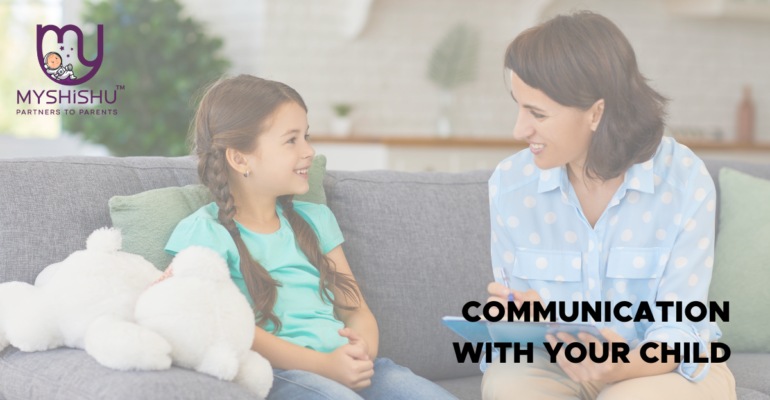Mastering Effective Communication with Your Child
Mastering Effective Communication with Your Child
The journey through parenthood is lined with love, laughter, and inevitable stumbling blocks. Communication, the essence of any relationship, takes center stage when you bring up children. Effective communication fosters trust, promotes emotional well-being, and gives children skills to survive in a world that makes them competent.
This blog will be on communicating effectively with children, regardless of whether the child is a toddler or teenagers. Let’s explore the key strategies, address the usual challenges, and put into the hands of parents tools that are going to help them make great, lifelong connections with their kids.
Table of Contents
Effectiveness in Communication
Effective communication goes beyond the mere act of talking to your child. It offers an opportunity for safe and open discussions in which both parties listen and understand each other, and mutual respect is gained. Here are some essential advantages to effective communication with your child:
- Better Parent-Child Relationship : Open communication promotes and fosters trust in the relationship, strengthening the bond between parents and children and ensuring security.
- Improved Emotional Well-Being: Child students who know that their voices matter and that there is someone who hears them feel comfortable in handling their feelings.
- Improved Self-esteem: When children are respected and their views and feelings are valued, they improve their self-esteem.
- Development of Communication Skills: Through effective communication with the parents, a child acquires precious communication skills for the rest of his life.
- Problem-Solving Skills: Open communication helps in solving problems together, which helps children learn the most valuable life skills.

Key Effective Communication Strategies
- Active Listening: Listening can best be characterized by paying full attention to your child. It might mean looking at your child, putting aside distracters, and genuinely looking interested in what the child is saying. Clarifying and asking them based on what they are talking about and paraphrasing their words.
- I Statements: Use “I” statements and avoid blaming. For example, instead of saying, “You always leave your toys scattered around,” you can say, “I feel frustrated when toys are left out because it makes the room look untidy.” This approach will make children understand the results of their actions without looking as if they are being attacked personally.
- Validating Feel: Accept and validate what the child feels, even if you disagree with it. Just say, for example, “I see you’re feeling frustrated,” or “It sounds like you’re sad.” Here, you’re empathizing, and for this reason, you’re setting a space in which you can communicate freely without being judged.
- Give Choices(Age-Appropriate): Giving children the power to choose helps instill independence and teaches them excellent decision-making skills. Offer them appropriate choices for their developmental level, such as, “Do you want to wear the red or blue shirt?” or “Would you like to read a book before bed or take a bath?”
- Set Clear Expectations: Children love predictability. Set clear expectations for behavior and the good or bad repercussions. Always be consistent with the follow-through so the child trusts you, and it paves the way for a two-way communication process.
- Operant closure on good ending: Catch your child “being good,” and notice it when you do. Positive reinforcement encourages the behavior you’d like to see more of and boosts your child’s self-esteem.
- Focus No Yelling and Nagging: Yelling and nagging establish a lousy environment for communication and can close the channels of communication. Make your appeals for disliked behavior or making needs known in calm and respectful language.
- Be Approachable: You must create an environment where your children feel safe enough to come to you with any big or small problem. This way, you can build trust with them and avert problems before they arise.
Adapting Communication Across the Life Span
Early Childhood and Infancy
- Address them, although the little one doesn’t understand a word yet; just describe your actions and sing. This way, you will promote this emotional bond and, later, speech development.
- Use understandable and concise language, including face expressions and gesture. Respond to the crying and cues of your child as early as possible to develop a confidence level in them.
Middle Childhood
- Promote open communication and willingness to listen actively.
- Speak in a lay language and explain the results of what will happen.
- Give children a chance to give their opinions and to express feelings.
- Talk to them appropriately and answer all their questions truthfully.
Adolescence
- Respects a teenager’s growing independence and need for privacy.
- Encourage honesty in the communication of feelings, friends, and experiences.
- Be a patient listener and guide them without passing any judgment.
- Solve problems respectfully, without giving lectures.
The Journey of Communication
Remember, however, that the communication process is bi-directional and a shared practice between the parent and child. If one can stay patient, persistent, and engaged in open and honest communication, one will be able to provide the best foundation for a lasting relationship with one’s child, where a few first attempts may not result in wrong steps and misunderstandings.
How do I improve my communication skills with my child?
Developing better communication skills by learning active listening, how to foster an open dialogue, understanding the meaning of non-verbal signs, using positive reinforcement, and handling hard conversations with sensitivity and patience.
What should I do if my child doesn’t want to talk to me?
Respect your child’s need for space, and don’t force them to talk. Instead, make opportunity moments that may open a channel of openness by spending quality time or simply having some fun with them. Let them know you will always be there whenever they want to talk.
How do I manage conflict with my child?
Resolve conflicts calmly and hear your child’s viewpoint; agree to disagree. Try to mend the matter not by accusation but through solution. Motivate your child with open communication and mutual respect.
Conclusion
Mastering effective communication with your child is an ongoing process that requires patience, empathy, and real meaning in understanding their needs and emotions. Essential links in this chain are, at the same time, active listening, stimulation of open dialogues, and support; you have to build your relationship with a child, just like with business. Remember, however, that each child is unique, so finding what works might take time—stay consistent, be patient, and celebrate the progress you make together.











